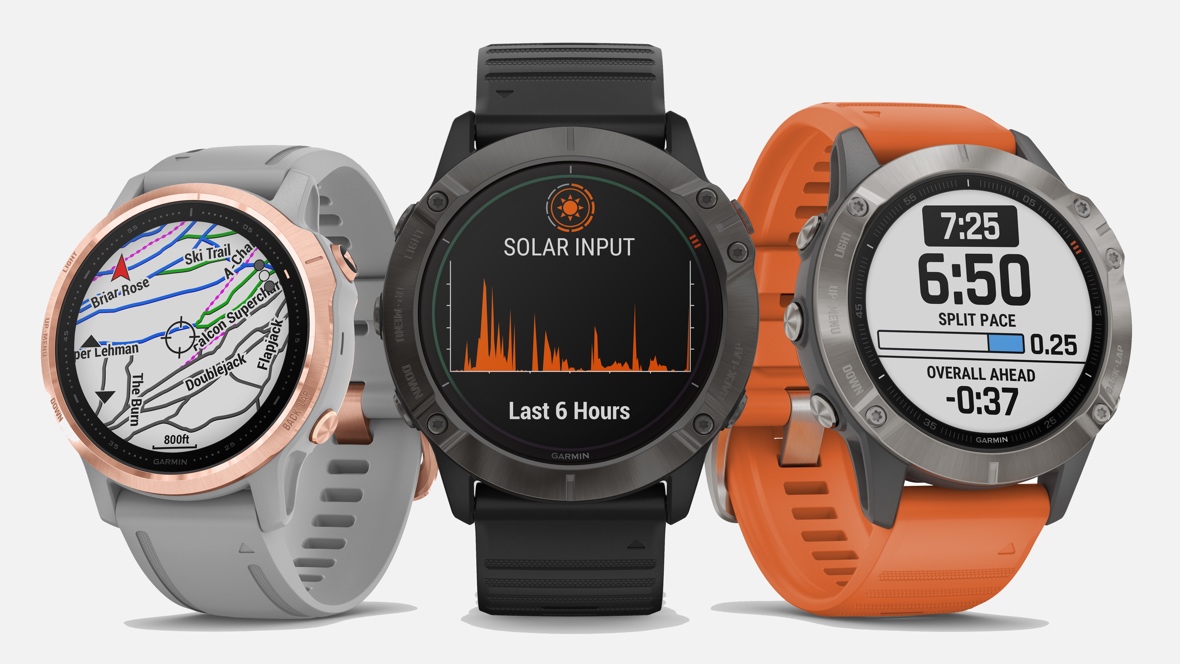Garmin Fenix 6 Review – New Features, Specs & Price

Garmin Fenix 6 Review – New Features, Specs & Price: Image Source
Garmin’s Fenix smartwatches have long been considered one of the finest and advanced smart multi-sport watch to buy. Since it introduces quality monitoring and GPS navigation for almost any outside activity. In its recent attempt to build on this reputation last week in Chamonix, France, Garmin revealed the Garmin Fenix 6 to be the biggest, yet improved layout of the firm, ahead of the Ultra-Trail du Mont-Blanc (UTMB).
The last thing we saw at Fenix was 5 Plus, which was just over a year ago, and brought some good changes to the faithful fan base in Garmin, especially more lifestyles such as music storage, Spotify control support and Garmin Pay for mobile payments.
The Fenix 6 and Fenix 5 basically doesn’t vary considerably from one another. The Fenix 5 Plus has the same sports monitoring, mapping devices and the same smart watch features as we have observed in this one model. The Fenix 6, like its predecessor, offers a host of very similar variants aimed at different consumer types.
Price
The cost hasn’t changed anything else. Yes, no matter what Fenix you select, the general smartwatch market is always extremely expensive with a wide range of skews and price tags ranging from GBP 529 to GBP 999 for Fenix 6 and Fenix 6S.
So, what’s new about Fenix 6?
New features
Jon Hosler, Garmin’s Senior Fenix Device Produkt Manager, says it took almost 18 months to launch the Fenix 6, and we expected more then only a few subtle changes during the Fenix 6 Pro Sapphire Series, a model standard that sells £ 699, but has not found the most expensive 6X solar power function.
The criticism of the most Fenix appliances has traditionally been quite vocal. Garmin has tried with his latest iteration, which, even though the display over the five-plus is 17 percent wider (1.3 inches), still manages to be smaller and lighter in general, with a thickness of less than 1 mm and a weight of less than 7 g. However, being such a subtle overhaul means you may not even notice it. However, we found it to be less heavy and that any small aid is needed in the heavy Fenix series.
However, the screen is one of the biggest design upgrades. The bezel size has decreased so that the actual screen and the top of the watch face are no longer separated from a black cap. And because of this, at a time (eight over five-plus six) you can install additional personalize-able information areas on the display. This means that you do not want to click on the menus to find the information you need.
It’s an “always-on” display now, so you don’t have to turn it on to check the time. This is definitely a good touch— the time should be straightforward.
Martin Resch, Garmin’s head of indoor product managing, said: “The fresh display is low energy and you can watch it in the sun.” We had doubts, but we must agree upon using Fenix 6 during a walk in the Alps under the sparkling mid-day sun. The transparency and vividness of the screen was remarkable when a noticeable improvement in the five-series in the immediate sunlight, which required often a decent squint.
The rubber belt that comes normally is adapted to its function and feels comfortable enough to securely attach to the QuickFit Band layout during our experiments. Garmin also has a few more intelligent nylon fabrics for the first time in this year, and we can’t see that they work so well with the sturdy Fenix 6 vibrations, especially the larger 6X.
Specs and Improvements
What’s new about the real features of the board? Hosler says: “Widgets looks like a great improvement for customers. We found, in fact, that these newly designed widgets make it far easier to track what the watch was, or is, monitoring, summarizing most important information on a condensed section that you can easily browse by pressing the menu key on the panel.’ Displaying vital information but again and again, finding stuff better, faster.’
The 6’s more efficient energy engine is one of the largest new software updates to Fenix. However, only the £ 849 6X Pro Solar system is the most exciting feature that is fitted with integrated solar panels in the display glass. “To extend the battery life, the solar power function is intended,” said Resch. It should offer you an average additional day a week than those who don’t have it. “In the remainder of our Fenix 6 range, Garmin has refined this so that it can actually represent the real consumption at the moment, days and hours which we love, instead of offering our customers an additional battery percentage score. This updates in real time to reflect the real battery energy left depending on how you use the timepiece, like a battery gage on a notebook. This shows longer battery life without surveillance than when you monitor a GPS drive.
Furthermore, GPS choices were optimized by allowing consumers to create their own custom battery management profiles according to how they use the watch, which Garmin says could “double the life of the battery” from previous releases. For instance, those who do not need to use certain functions can choose to turn it off and focus and the tools they need to ensure that the clock does not drain the battery unnecessarily when you track the activity.
We did not have enough time to properly test this, but usually we found the clock to operate smoothly and with decent accuracy. After the “path walk” option it found GPS almost immediately and recorded a 50-minute walk to the top of the Refuge Elena, a hotel and restaurant, at a height of 44 minutes and a maximum height of 2,063 meters. The information point of the refuge said it was 2,062 meters above sea level and was therefore quite bad.
With respect to multiple sport surveillance, its heart rate sensor is up to date with the Fenix 6 series. You had to buy an additional brace to monitor your heart rate during the swimming period previously. Garmin, however, could tweak the sensor so that the heart rate underwater could now be evaluated. Although we did not have the opportunity to check this feature, we can say that swimmers are happy if they are right.
Final Words
Overall, we’d like to have a few major changes in the Fenix 6 layout. It almost feels the same as the 5 Plus before it, and while Garmin is probably a little concerned about disrupting his devoted customer base by modifying anything he already enjoys. All could be improved.
The solar feature is one of the exciting things Garmin has seen for years, so it’s just available on the 6X Solar Pro model, which is overpriced and costs £ 849. If we say so, we are sure that more iterations to cheaper designs will be supplied in the next years. However, Fenix remains undoubtedly one of the most compelling and precise multi-sport trackers.
Read Next: Fossil Gen 5 Smartwatch Review – Wear OS Keeps On Floating



